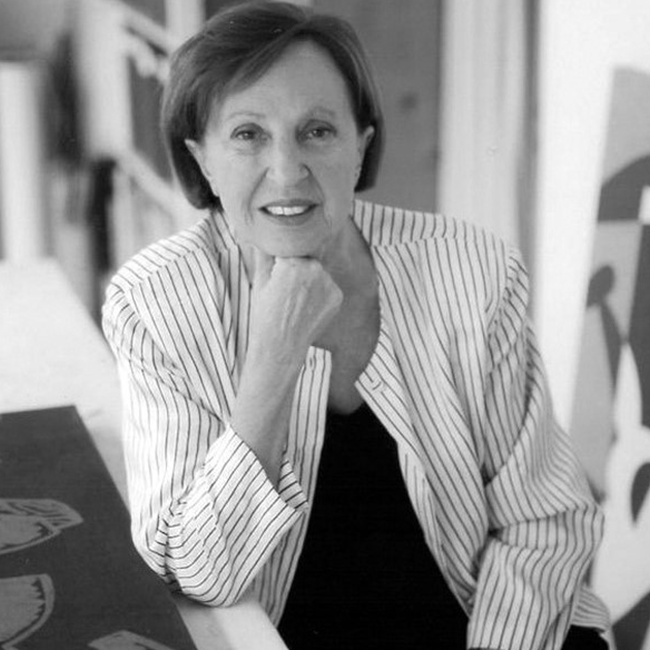Carla Accardi
Born in Trapani in 1924, after graduating from classical high school she moved to Palermo to attend the Academy of Fine Arts, which she completed in 1947. She took her first steps as an artist in the Roman milieu where it was not long before she emerged: she founded the Forma 1 abstract group together with Antonio Sanfilippo (who would become her husband in '49), Achille Perilli, Giulio Turcato, Piero Dorazio, Pietro Consagra, Mino Guerrini and Ugo Attardi. She participated in numerous group exhibitions in Italy and abroad and in 1950 held her first solo show at Galleria Numero in Florence.
After an initial use of color, during the 1950s his language moved toward an abstraction reduced to sign and black and white, close to the research of the major Informal artists.
In the 1960s, with his membership in the Continuity group, there is a recovery of color in his works, with references to metropolitan culture and optical effects. His research is characterized by continuous experimentation that is radicalized in the use of transparent plastic supports that accentuate the nature of the painting as a luminous diaphragm.
In the 1980s, returning to painting on canvas, her language underwent a further change using signs and chromatic juxtapositions. Appointed a member of the Brera Academy in 1996, the following year she became an adviser to the Commission for the Venice Biennale. Her works are in the collections of the National Gallery of Modern Art in Rome, the Museum of Contemporary Art at the Castello di Rivoli (Turin), the Civic Galleries of Modena and Bologna, the Palazzo Reale in Milan, and the Museo Civico in Turin. Accardi died in Rome on February 23, 2014.

Born in Trapani in 1924, after graduating from classical high school she moved to Palermo to attend the Academy of Fine Arts, which she completed in 1947. She took her first steps as an artist in the Roman milieu where it was not long before she emerged: she founded the Forma 1 abstract group together with Antonio Sanfilippo (who would become her husband in '49), Achille Perilli, Giulio Turcato, Piero Dorazio, Pietro Consagra, Mino Guerrini and Ugo Attardi. She participated in numerous group exhibitions in Italy and abroad and in 1950 held her first solo show at Galleria Numero in Florence.
After an initial use of color, during the 1950s his language moved toward an abstraction reduced to sign and black and white, close to the research of the major Informal artists.
In the 1960s, with his membership in the Continuity group, there is a recovery of color in his works, with references to metropolitan culture and optical effects. His research is characterized by continuous experimentation that is radicalized in the use of transparent plastic supports that accentuate the nature of the painting as a luminous diaphragm.
In the 1980s, returning to painting on canvas, her language underwent a further change using signs and chromatic juxtapositions. Appointed a member of the Brera Academy in 1996, the following year she became an adviser to the Commission for the Venice Biennale. Her works are in the collections of the National Gallery of Modern Art in Rome, the Museum of Contemporary Art at the Castello di Rivoli (Turin), the Civic Galleries of Modena and Bologna, the Palazzo Reale in Milan, and the Museo Civico in Turin. Accardi died in Rome on February 23, 2014.
